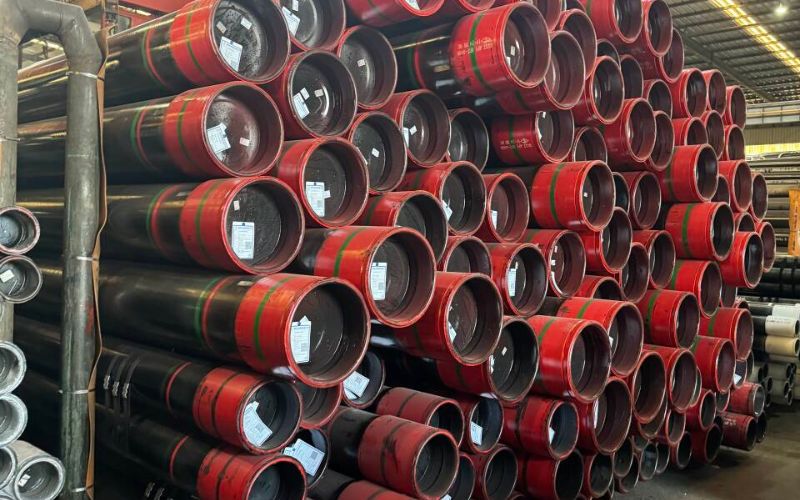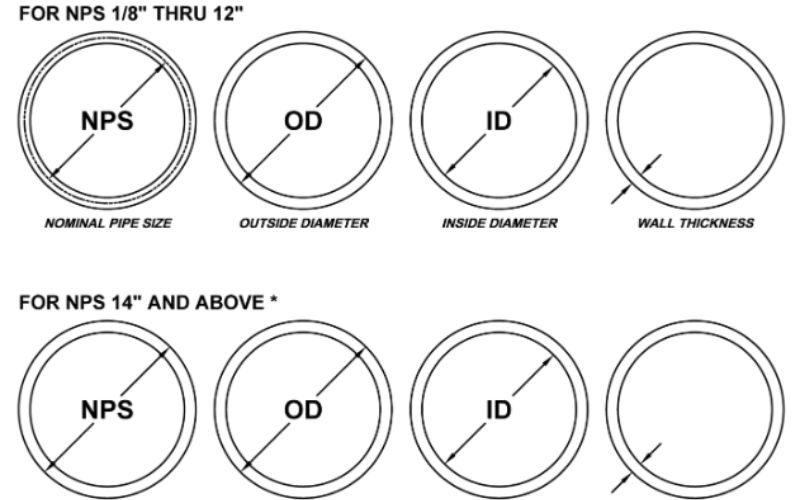Selecting the appropriate and effective metal pipes for your task should always reflect the maintenance of the plumbing system as well as the portability. In any scenario, rust and the like is a big cause of system failure. How much more expensive is it if the material that is going to be used in the installation of the pipes can directly resist the are looking for corrosion and the like? This text discusses corrosion-resistant metal pipes and the materials which are best suited for situations of high moisture, chemicals, and extreme conditions. Whether it is a residential plumbing system they are working on or even an industrial setup which is a bit different from the previously mentioned case, it is important to understand the properties of the corrossion-resistant metal pipes, as it helps in saving repair time as well as money in the long run. Continue reading for a list of the top corrosion-resistant metal pipes and the reasons as to why they are known to have a long lifespan.
Understanding Rust and Corrosion
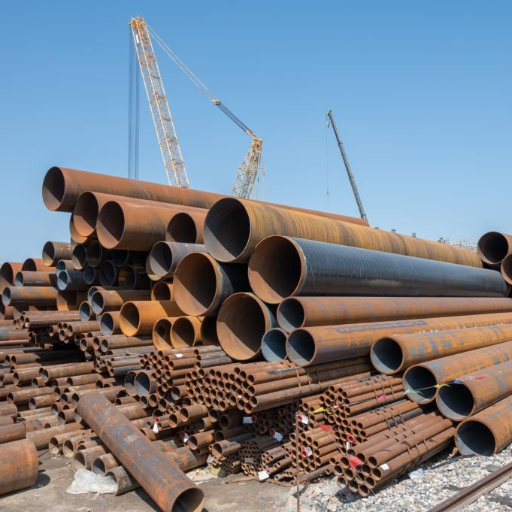
Rust and corrosion are the results of metals being exposed to oxygen and moisture over extended periods of time. As a result, materials deteriorate through a chemical reaction. Rust, particularly, is caused by the corrosion of iron and steel, and is characterized by the formation of a bland oxide layer that does not hold strength. Rust, in general, is caused by the oxidation of various metals, and in iron, it is further aggravated by the climate, which includes increased moisture, water, humidity, and the presence of chemicals. These processes can be stopped by choosing the correct metals with the requirements needed, as well as the right alloys to combine and even applying specific designs and shapes in order to reduce the corrosive elements present in the metals. Mastering these concepts is fundamental for selecting the proper materials in an environment with high corrosion.
What Causes Rust and Corrosion?
Rust and corrosion are primarily triggered by metals interacting with the surroundings and undergoing a series of reactions. When iron and steel come into contact with oxygen and water, they undergo oxidation, giving rise to the term ” rust for the iron oxide. The acceleration of the process with the presence of other catalysts, like salts, acids or other pollutants is commonly known. Corrosion is a far-reaching concept that primarily deals with the reactions of different materials with the surrounding environment’s properties, including but not limited to moisture, chemicals, and extreme temperature variations. Apart from reacting with biological conditions, metals can vary significantly in their composition, and, as in the case of stainless steel, have protective oxidation layers, showing a higher degree of resistance compared to other materials. With some moistening and polishing as well as the use of protective inhibitors, the reaction can be easily slowed down, and protective corrosion and high resistance to moisture applications can be configured and employed.
The Oxidation Process in Metals
When metals react with oxygen in the environment, they undergo oxidation, leading to the formation of ‘oxides’. This metamorphosis typically alters the metal’s characteristics, rendering it weaker, less conductive, and generally less useful. For instance, iron reacts with water and oxygen to produce rust (iron oxide); over time, this type of oxidized product will make structures porous. As yet, metals like aluminum appear to resist oxidation, and although they are oxidized, they form a thin protective layer that tends to resist further corrosion. This suggests that the same process can have different effects on different metals.
Oxidation is being observed with a new perspective, including the element of rate. It turns out that the rate has a significant relationship with other components, such as temperature, humidity, and pollutants like sulphur dioxide. For example, some scholars estimated from the studies provided that iron can react and get rust twenty times faster due to moisture compared to the conditions of dry moisture. Similarly, when moisture combines with other extremely oxidative conditions such as acidity and salinity, e.g., in coastal environments, it steadily accelerates the metals’ reaction.
Industry Insight: Development is in full throttle so as to reduce the impact of oxidation with metals. Graphene-based coatings and cathodic protection systems are now being increasingly deployed in the industry and for infrastructure to enhance the longevity of metals. This significantly helps sectors that have been struggling with high maintenance costs, as they can be reduced, while the durability of metal components is improved due to these protective methods.
How to Prevent Rust and Extend Pipe Lifespan
For the purpose of inhibiting rust and extending the lifetime of pipes, several protection techniques must be combined, along with proper care and the use of the right materials. Here are the some of the methods:
Issuing Out Protective Coatings
The pipe’s surface can be protected from the damaging effects of oxygen and moisture by actively applying corrosion-resistant coatings. Rather than using traditional coatings, issuing coatings of powder or zinc-rich primers will enhance anti-terrosion protection.
Cathodic Protection
In this technique, a sacrificial anode made from a more reactive metal, such as zinc or magnesium, is used to redirect the chemical attacks away from the pipe to the anode, preserving its structure.
Material Choice
The use of stainless steel and copper pipes is an excellent choice in environments that are affected by high humidity and intense chemical changes.
Proper Maintenance and Inspections
Corroded layers on the canal walls can be removed by using fresh shields of protective anti-erosion powder. While the pipes are dry, the sites are prepared to welcome new additions of fresh layers, thus making the pipes accessible to the climatic conditions in which they are maintained within the structure.
Types of Rust-Resistant Metal Pipes
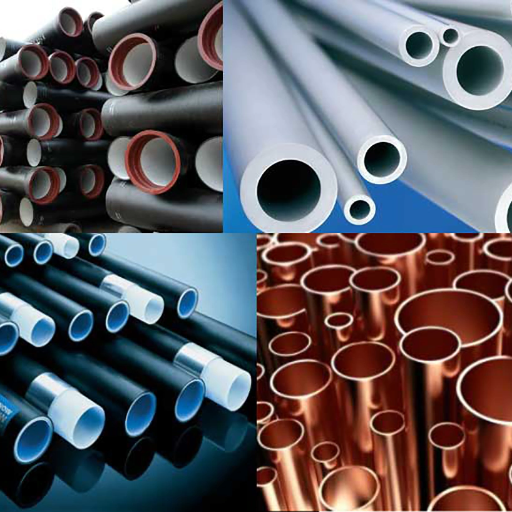
Stainless steel, galvanized steel, copper, aluminum, and PVC-coated pipes are among the most common types of pipes resistant to rust.
Stainless Steel: Properties and Benefits
- Safety To Corrosion: No other metal withstands the attack of time better than corrosion. stainless steels have high resistance to corrosion and rust, and can be used in both interior and exterior environments.
- Resistance: For decades, steel has been renowned for its strength. stainless steel can be exposed to extreme temperatures, pressure, and wear and it will still endure.
- Hygiene: In healthcare, food process, and kitchen industries, stainless steel is the best. Other metals can corrode, which is harmful when they harbor bacteria. Stainless steel is self-cleaning and bacteria free.
- Visual Appeal: In the world of modern technology and design, stainless steel is the preferred option due to its fine finish, which appeals to individuals who value the appearance of the tools and products they use.
- Conservation: Conserving the environment is of great value to us now more than ever. Stainless steel can be used in all applications since it is a 100% recyclable metal.
Aluminum: Lightweight and Corrosion-Resistant
Lightweight and corrosion-resistant. Regarding transportation, aluminium is a light element that reduces the weight of aerospace, automotive, and building industry products. The transportation and burning of fuel become efficient. In addition, due to the protective oxide layer that naturally forms on its surface, aluminium offers resistance to rust and therefore increases durability. The combination of these factors and its ability to recycle make aluminium a sustainable and versatile material.
Copper: Natural Resistance to Corrosion
The natural corrosion resistance of copper is praised for its unrivaled properties, enabling its use in wiring, construction, and other chemical manufacturing. The development of a thin, self-forming and self-healing protective layer of copper oxide, which provides total coverage and absolute protection of underlying metal, helps to combat corrosion. In contrast with myriad other synthetics, the copper handles are highly durable and life-saving even in deadly conditions. Copper, furthermore, offers a solution to the modern and pressing problem in the healthcare sector and public safety.
Comparison of Rust-Resistant Pipe Materials
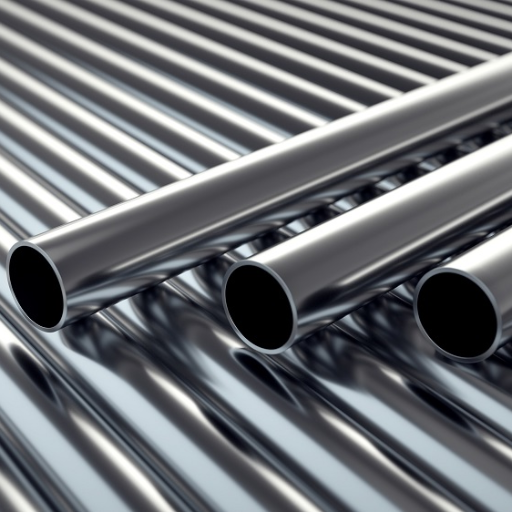
1. Stainless Steel
Stainless steel is an excellent corrosion-resistant material as a result of its high chromium content that helps to develop a protective passive oxide layer. It is durable, able to resist high amounts of heat, and is widely used in a variety of domestic and industrial activities. Additionally, stainless steel is adopted for its temperature resistance, although it is more expensive compared to alternative materials.
2. PVC (Polyvinyl Chloride)
Being nonmetallic, PVC pipes do not rust like other materials. They are light, low-cost, and do not corrode from chemicals. On the flip side, these also mean that they are not suited to applications that require high pressure or high temperature, as they have poor strength and resistance to heat.
3. Galvanized Steel
Due to the layer of zinc coating, galvanized steel pipes are also a barrier for rust and corrosion. That means they are better in regards to price and have a decent lifespan. On the other hand, the wear of zinc over time results in exposure of the steel to rust.
4. Copper
In addition to their strength, copper pipes have rust and microbial properties. Copper is already known for its long-term protection as a result of a thin layer of copper oxide. Even though the cost of maintenance of copper pipes is high, they are a necessity for a wide range of applications where management and durability are vital.
Cost Analysis of Different Pipe Materials
It’s essential to consider both the initial costs of purchasing and the expenses related to maintenance, repairs, and changes in different pipe materials, and present them in a table. Steel pipes are immediately less expensive, but can accumulate large sums on their expenses on maintenance costs and possible repairs due to their high chance to rust. Even with an extra protective layer, such as from the zinc in galvanized steel pipes, there is a requirement for a new pipe in the long run.
Maintaining copper pipes can be costly. However, with their hefty resistance to rust, in places where pipes require durability and life-long reliability, copper pipes always prove useful. The copper pipe is composed of a durable layer of PEX (cross-linked polyethylene) that helps take over. The emergence of PEX has shifted the market due to its low price, non-rigidity, and low installation cost. This is a life-long solution that has the properties of traditional metal.
The choice of material for pipes is primarily determined by the application’s needs and the environment, as well as budget limitations.
Durability and Maintenance Requirements
While evaluating durability, copper pipes are highly resistant to corrosion and can last over 50 years with minimal maintenance interventions, making them a solid choice. Nevertheless, in areas with acidic water, the copper may be prone to pinhole leaks. PEX, on the other hand, is less likely to corrode and develop leaks and offers great resistance to scale and chlorine, and, combined with good installation, also demonstrations a 50-year life. Thanks to its flexibleness, PEX pipes require very low maintenance due to minimal cracking and burst risks. PVC pipes, when installed in places such as drainage, are long lasting (between 25-40 years) but also need to be inspected at intervals to prevent cracking or damage when extreme conditions prevail.
Environmental Impact of Each Material
PEX pipes require less energy to produce than most other materials as well as the absence of leaking risks, which make them a largely accessible option. Still, it is considerably difficult to recycle them, and this becomes an issue in the long run.
Time and money are saved when you use PVC pipes and production is simpler. However, both pose more serious threats in terms of production. One of the serious challenges production poses to PVC pipes is a release of toxic products as well as waste. There are some recycling practices, though, but they gauge a moderate level of release and damage to the environment.
Applications of Corrosion-Resistant Pipes
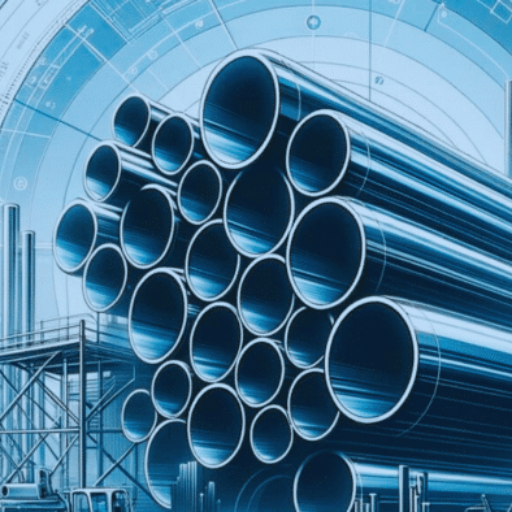
Corrosion-resistant pipes have a wide range of applications in industries such as those related to chemicals, oil and gas, and water treatment, which require durability and the ability to withstand extreme conditions. They are used in wastewater treatment plants, oil and gas pipelines and chemical processing plants for their resistance to corrosive substances. Their ability to hold up to aggressive chemical environments can also be seen in marine environments, construction, and plumbing where long-term performance and ease of maintenance are required, making them a solid choice for these and other demanding applications.
Plumbing: Ensuring Longevity and Safety
Both clean water supply and wastewater management in homes and commercial buildings depend on plumbing systems, and longevity and performance are the most important traits in this area. While the importance of high-quality materials for corrosion, chemical, and material resistance is clear and unquestionable, servicing and prompt interventions are necessary to diagnose and resolve potential problems and prevent contamination of the water supply and at the same time protect the drainage system and plumbing. A properly installed and maintained plumbing system enhances innovation, performance, and sustainability.
Construction: Meeting Structural Standards
To ensure the structural safety, integrity, and long life of a building, engineering, design, and construction work must be conducted in compliance with all relevant structural standards. In addition to compliance, following the standards set out in the legislation, including detailed design and construction, the project execution plan, and signing a contract with the main contractor and other subcontractors, is also essential. Additionally, systematic control of the project during the contracting permit stage should ensure adherence to the effectiveness of the proposed solutions and all agreed-upon terms of the agreement. The use of advanced structural design and analysis technologies, including 3D modeling and stress calculations, and the further development of these technologies help reduce design errors and ensure that all the supporting structures fully satisfy the given requirements, or even require more than the usual level.
Marine Environments: Resistance to Saltwater Corrosion
In marine environments, structures and materials are exposed to saltwater, posing a threat of damage from corrosion. Metals in saltwater are susceptible to corrosion due to the high chloride content, which breaks down the protective oxide layers that may be present, thereby acting as a source of corrosion. Due to this factor, marine-based shapes and structures require materials such as stainless steel, titanium, and non-metallic composites to resist corrosion. To protect from corrosion, coatings such as epoxy and polyurethane are also applied. To prevent corrosion on metallic surfaces, advanced techniques such as impressed current cathodic protection systems (ICCP) aim to rectify and mitigate the overall corrosion process. Unfortunately, this process does not entirely stop corrosion, so regular inspections on devices and structures need to be maintained.
Choosing the Right Rust-Resistant Pipe
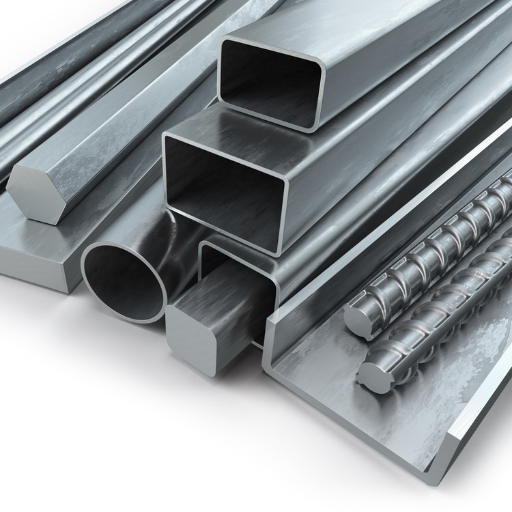
In order to identify the most fitting rust-resistant pipe, you should weigh the following criteria:
- 1
Material: Based on the specific requirements of the application, consider selecting corrosion-resistant materials such as stainless steel, PVC, or copper. - 2
Environment: Depending on factors such as moisture levels, salinity, and temperature, consider the pipe’s durability. - 3
Protective Coatings: Ensure you select the appropriate epoxy and polyurethane coatings to safeguard the pipe against rust and corrosion further. - 4
Maintenance Requirements: When selecting a pipe, look for one that’s easy to carry out maintenance or that is suitable for conditions in which it is to be maintained. Consider the need for inspections and maintenance under extreme conditions.
Key Takeaway: With these considerations in mind, the selection of the pipe will be in accordance with the initial objectives and stand as an assurance of it’s performance in the long haul.
Factors to Consider: Budget and Climate
When discussing rust-resistant tubular systems, it is essential to consider both economic constraints and the region where these systems will be used. Economic limitations determine the materials that can be used. From economy grade galvanised steel to the far more expensive stainless steel and coated aluminium, there is an entire world of options. Although materials of superior quality have a higher initial cost, they incur minimal long-term repair expenses.
The region plays a major role; every region has a distinctive level of corrosion demand. Excessive rusting is highly accelerated in the presence of high levels of saline substances and in extremely humid and coastal areas. Forces of nature make it imperative to switch to materials for pipes that are to be used, including plastic-lined and fibreglass-reinforced steel. The total opposite would be arid regions, as a supply reduce the carry moisture and accordingly the region offers cost-effective options as supply remain steady. The need to balance cost with the climatic region is an essential parameter to consider when measuring the economic and environmental benefits of tailored piped solutions.
Intended Use and Application Needs
There are times that the most application-specific rust-resistant pipe is necessary. For example, the environment of industrial facilities often has an aggressiveness to it, either from the high temperature required to produce products or chemicals. In such cases, stainless steel pipes or even fiberglass-reinforced pipes are the best solution, as they can withstand heat and aggressive corrosion. However, with the increased development of the underground and the increased density of the industrial sections, the need for bundled PVC or cheaper lined pipes is much more necessary. The most crucial, yet often overlooked, item when it comes to pipes is the fluid being transported, which can exacerbate the situation and the handling of that fluid, and also determines how long the piping network is intended to function before it needs to be replaced. Application rate is the most critical for any repair, and usually life-cycle cost is the last item considered.
Practical Tips for Selection and Installation
- Understanding the Environment: It’s crucial to understand the corrosion environment, including the presence of humidity, temperature changes, and chemical solutions when choosing the reliable pipe resistant to the mentioned elements.
- Selecting the Appropriate Materials: Each application has its own requirements. Stainless steel will be the obvious choice in areas exposed to high corrosion, while PVC or coated steel pipes will do in areas with low corrosion.
- Applying Coatings or Linings: When using metal pipes, it is essential to ensure they are adequately coated. If possible, lining the pipes with anti-corrosive materials, such as epoxy or plastics, can increase their durability and maintain optimal performance.
- Fluids Compatibility: Pipes must be selected considering the fluids that will be circulating inside of them. Long-term degradation or reaction with chemicals is avoided when this requirement is considered.
- Observe Factory Installation Guidelines: All installation measures specified by the manufacturer, such as joint sealing methods and torque requirements, should be strictly followed to minimize the unlikely risk of leaks and achieve optimal performance.
Frequently Asked Questions (FAQs)
Reference Sources
- 4 Types of Metal that are Corrosion Resistant or Don’t Rust – This article discusses metals like copper, bronze, and brass, which are resistant to rust.
- The Best Corrosion-Resistant Pipes – Highlights stainless steel as a top choice for rust and corrosion resistance.
- What metals are incredibly strong, body safe, doesn’t rust– A discussion on metals like stainless steel, titanium alloys, and niobium alloys.
- Corrosion-Resistant Pipes: Comparing the Best and Worst – Compares various materials for corrosion resistance, including high-performance alloys.
- Top Black Steel Pipe Supplier In China



